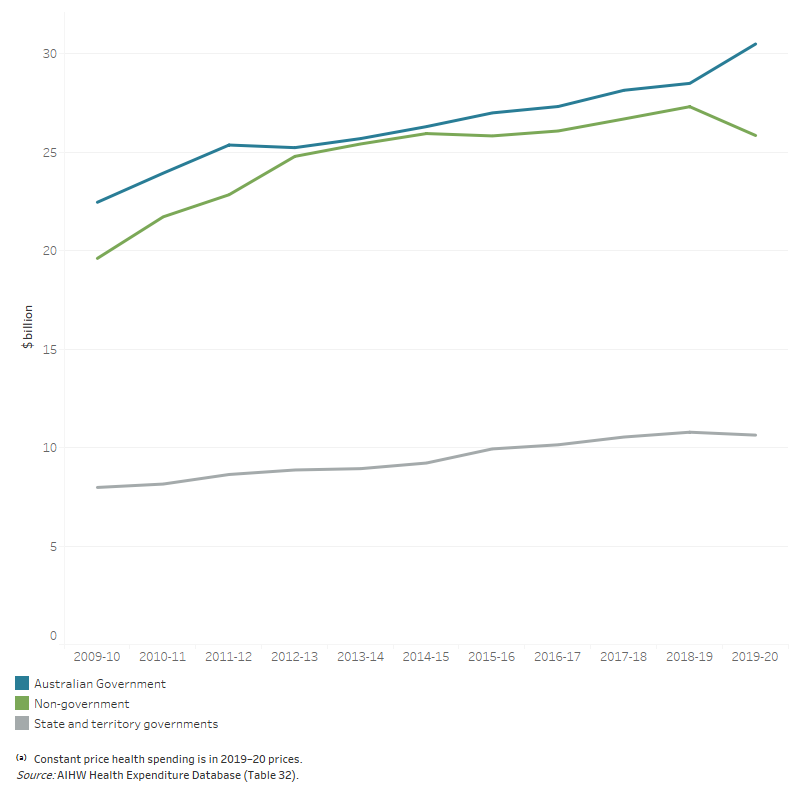Primary health care
In 2019–20, $66.9 billion was spent on primary health care. Of this, the Australian Government spent $30.5 billion (45.5%), non-government entities $25.8 billion (38.6%), and state and territory governments $10.6 billion (15.9%) (Figure 27).
Figure 27: Primary health care spending, by source of funds, constant prices⁽ᵃ⁾, 2009–10 to 2019–20
The line graph shows that spending on primary health care by the Australian Government, state and territory governments and non-government sector over the decade from 2009–10 and 2019–20. Australian Government spending on primary health care was the highest of all sources. Australian Government spending on primary health care increased in most years except for 2012–13 and reached $30.5 billion in 2019–20. Similarly, state and territory government spending on primary health care increased every year to $10.8 billion in 2018–19 before a slight decline to $10.6 billion in 2019–20. Non-government spending increased every year to $ 27.3 billion in 2018–19 before declining to $25.8 billion in 2019–20.

This represented a $0.4 billion increase in spending from 2018–19 in real terms. This growth in 2019–20 was mainly due to increased spending by the Australian Government of $2.0 billion (Table 32). State and territory governments and non-government entities spending on primary health care decreased by 1.4% and 5.4% respectively compared to 2018–19, most likely due to the impacts of the COVID-19 pandemic.
The increase in spending in real terms on primary health care in 2019–20 was attributable to increases on: unreferred medical services (increased by $0.7 billion), public health ($0.7 billion), and benefits-paid pharmaceuticals ($0.7 billion).
Between 2009–10 and 2019–20, real growth averaged 3.0% each year. The Australian Government spending on primary health care increased the most over the decade, by $8.0 billion, representing an average yearly real growth of 3.1%.


